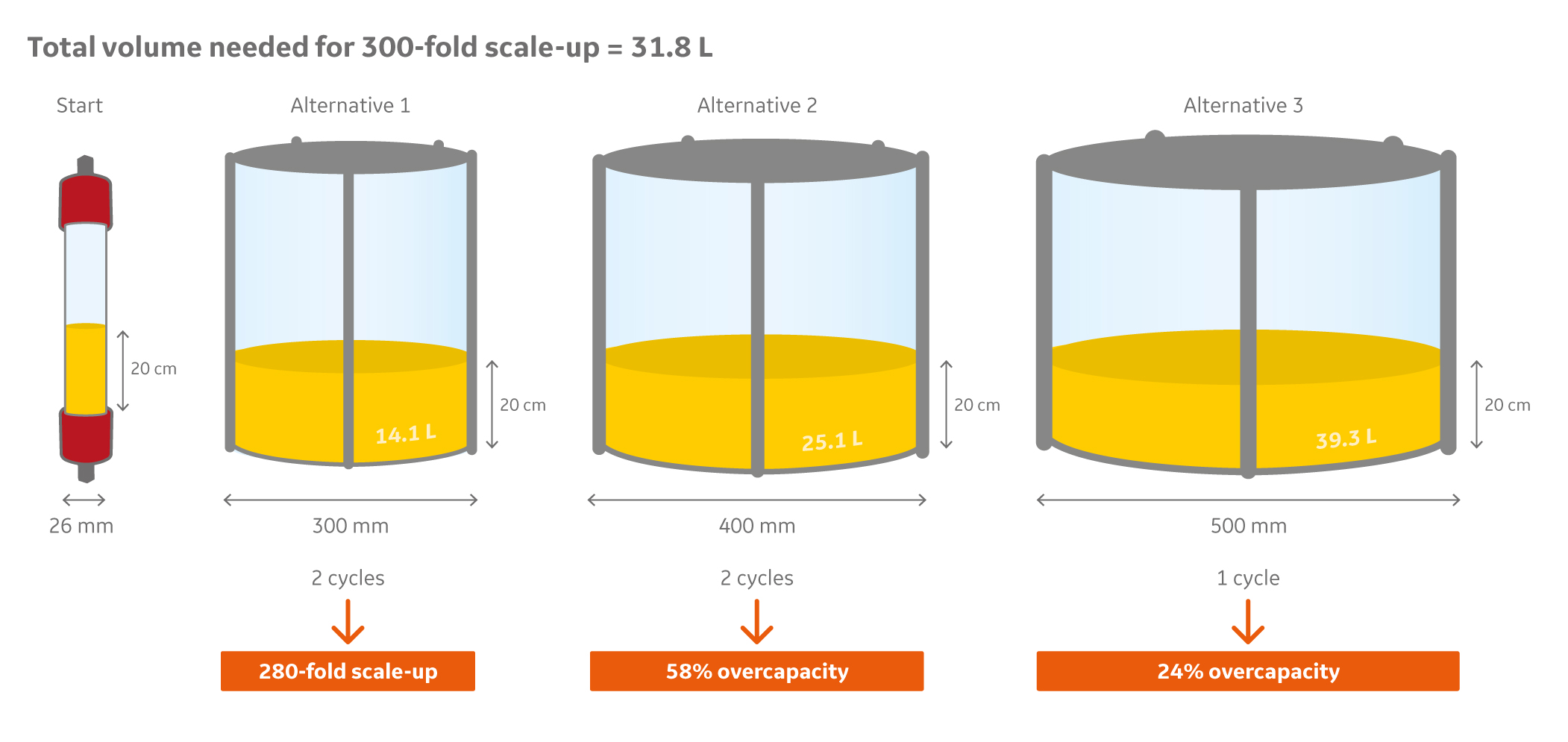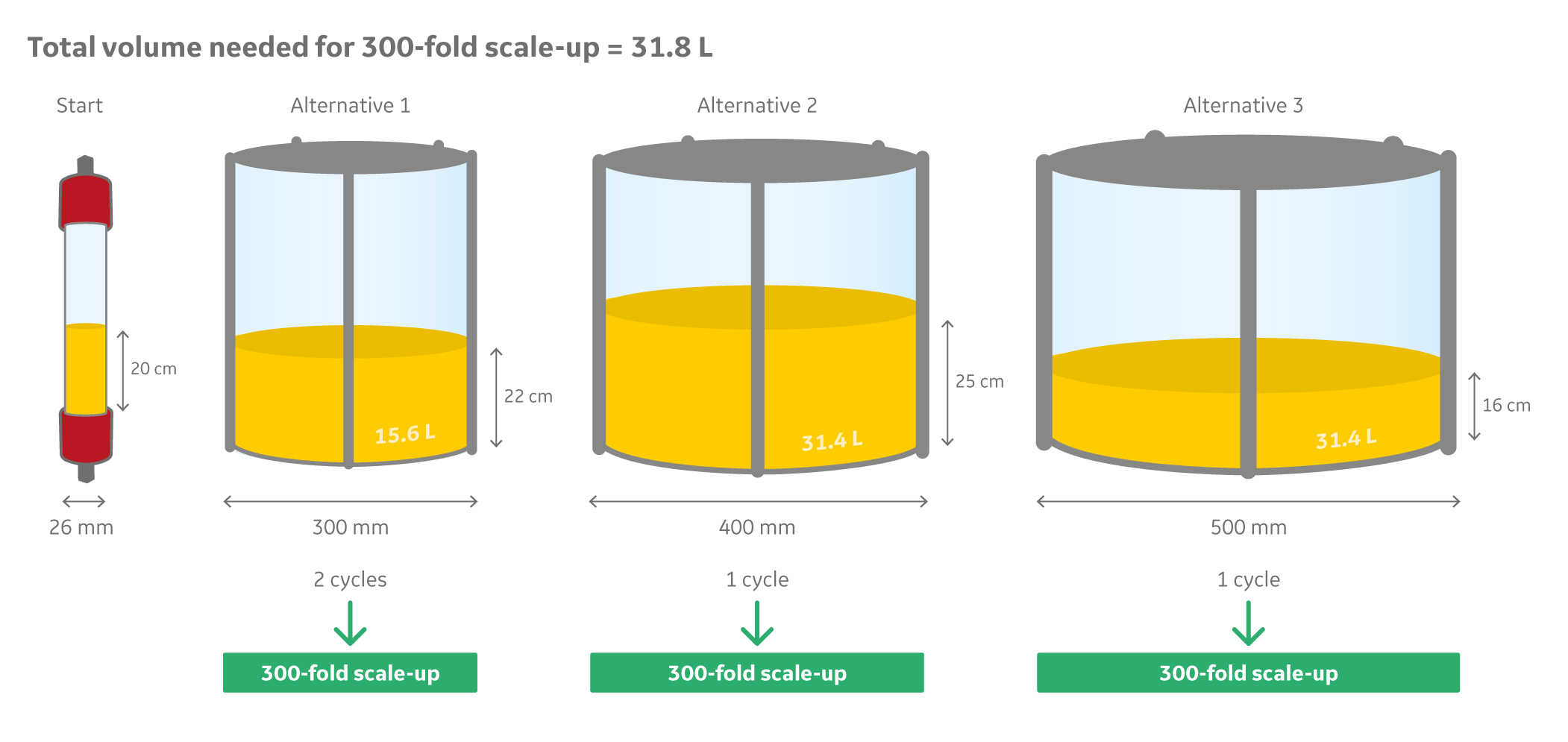When scaling, you can make better use of existing chromatography columns while avoiding overcapacity. Try this alternative approach to achieve a constant residence time.
Goodbye bed height, hello bed volume
Keeping a constant residence time is a well-established strategy when scaling up a chromatography step. Typically, this is achieved by keeping the bed height and linear flow velocity constant. But aiming for a constant bed height throughout scales has a limitation—you need an exact chromatography column size that fits the purpose.
If the column is too small, you waste time by cycling it several times to reach the desired output. If the column is too big, you don’t use all the capacity you have and waste resin. So, I offer you an industry hack: standardize across scales to constant column volumes per hour (CV/h) instead.
Keep bed height flexible to reduce costs
Rather than strict adherence to constant linear velocity (cm/h), you can try measuring column volumes per hour (CV/h) for increased flexibility (1). This approach gives freedom to choose between your existing columns instead of investing in new hardware.
Just pack your column to a flexible bed height to match the specified product load, keeping the CV/h constant. The bed height should be within the column’s pressure and performance range, of course.
Instead of just having the option of different column diameters, CV/h measurement opens up for changes to bed height as well as diameter. With this approach, you can avoid overcapacity of the column. That way you can reduce resin-related costs, particularly at manufacturing scale.
There is no perfect column match—there are several
Let’s put this alternative approach to the test. As an example, assume we want to do a 300-fold scale-up of mass load starting with a column with a diameter of 26 mm. To simplify, we leave out any scale-up steps between lab and manufacturing scale. In this example we have three different choices of columns available, 300, 400, and 500 mm in diameter.
Not one of the available columns is a perfect match for the desired scale-up factor when the bed height is kept constant. Either several cycles are required, increasing the time spent, or all resin capacity is not used. So, what happens if we vary the bed height and use column volume per hour by keeping the bed volume constant?
With this approach, the desired scale-up factor could be matched to the columns available. As the bed height is adjusted, the load can be kept constant in all three columns. If you have your own examples, try these chromatography calculator tools. To calculate your residence time, use 60/(CV/h).
Keep in mind: scale-up using CV/h doesn’t fit all applications
The concept of measuring CV/h is especially useful in affinity chromatography where the residence time determines the capacity independent of scale or bed height. In a recent multidimensional scale-up study, CV/h was used to perform a 20-fold scaling from lab- to pilot scale.
It is also useful for many ion exchange, multimodal, and hydrophobic interaction chromatography applications. But remember that the approach might not work for sensitive or challenging separations, where peak resolution is essential, or for size exclusion chromatography.
Your results will, of course, also be dependent on your column packing. If you have a poorly packed column, the scale-up will also be poor, regardless of strategy. If you want some help, check out some options for automatic packing methods that can ensure robust column packing.
References
1. Kidal, S. and Elvang Jensen, O., Using volumetric flow to scale up chromatographic processes, BioPharm International, 19:3 (2006)

